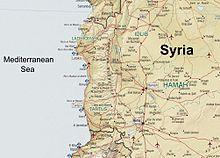
The Alawite State, officially named the Territory of the Alawites, after the locally-dominant Alawites from its inception until its integration to the Syrian Federation in 1922, was a French mandate territory on the coast of present-day Syria after World War I. The French Mandate from the League of Nations lasted from 1920 to 1946.

Latakia is the principal port city of Syria and capital city of the Latakia Governorate located on the Mediterranean coast. Historically, it has also been known as Laodicea in Syria or Laodicea ad Mare. In addition to serving as a port, the city is a significant manufacturing center for surrounding agricultural towns and villages. According to 2023 estimate, the population of the city is 709,000, its population greatly increased as a result of the ongoing Syrian Civil War, which led to an influx of internally displaced persons from rebel held areas. It is the 4th-largest city in Syria after Aleppo, Damascus, and Homs. It borders Tartus to the south, Hama to the east, and Idlib to the north, and Cape Apostolos Andreas, the north-eastern tip of Cyprus, is about 109 kilometres (68 mi) away.

The Alawites, also known as Nusayrites, are an ethnoreligious group that live primarily in the Levant and follow Alawism, a religious sect that splintered from early Shi'ism as a ghulat branch during the ninth century. Alawites venerate Ali ibn Abi Talib, revered as the first Imam in the Twelver school, as the physical manifestation of God. The group was founded by Ibn Nusayr during the 9th century. Ibn Nusayr was a disciple of the tenth Twelver Imam, Ali al-Hadi and of the eleventh Twelver Imam, Hasan al-Askari. For this reason, Alawites are also called Nusayris.
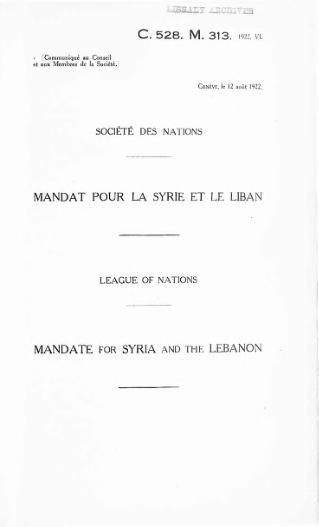
The Mandate for Syria and the Lebanon was a League of Nations mandate founded in the aftermath of the First World War and the partitioning of the Ottoman Empire, concerning Syria and Lebanon. The mandate system was supposed to differ from colonialism, with the governing country intended to act as a trustee until the inhabitants were considered eligible for self-government. At that point, the mandate would terminate and a sovereign state would be born.

The Battle of Maysalun, also known as the Battle of Maysalun Pass or the Battle of Khan Maysalun, was a four-hour battle fought between the forces of the Arab Kingdom of Syria and the French Army of the Levant on 24 July 1920 near Khan Maysalun in the Anti-Lebanon Mountains, about 25 kilometres (16 mi) west of Damascus.
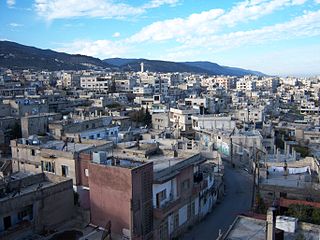
Masyaf is a city in northwestern Syria. It is the center of the Masyaf District in the Hama Governorate. As of 2004, Masyaf had a religiously diverse population of approximately 22,000 Ismailis, Alawites and Christians. The city is well known for its large medieval castle, particularly its role as the headquarters of the Nizari Ismailis and their elite Assassins unit.

Yusuf al-Azma was the Syrian minister of war in the governments of prime ministers Rida al-Rikabi and Hashim al-Atassi, and the Arab Army's chief of general staff under King Faisal. He served as minister of war from January 1920 until his death while commanding Syrian forces against a French invasion during the Battle of Maysalun.

Qardaha is a town in northwestern Syria, in the mountains overlooking the coastal town of Latakia. Nearby localities include Kilmakho to the west, Bustan al-Basha to the southwest, Harf al-Musaytirah to the southeast and Muzayraa to the north. According to the Syrian Central Bureau of Statistics, Qardaha had a population of 8,671 in 2004. It has a predominantly Alawite population and is the traditional home of the al-Assad family, which has ruled Syria since the 1970 Corrective Movement.

Sultan al-Atrash was a Syrian Druze nationalist who commanded the Great Syrian Revolt against France and its State of Syria. One of the most influential figures in Syrian and Druze history, he played a major role in deciding the destiny of Jabal al-Druze and of Syria in general.

Ibrahim Hananu or Ibrahim Hanano (1869–1935) was an Ottoman Kurdish municipal official and later a leader of a revolt against the French presence in northern Syria. He was a member of a notable landholding family of Kurdish origin in northern Syria.
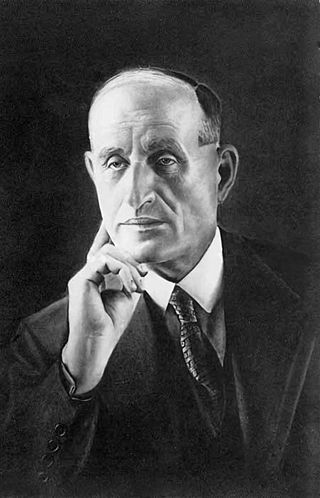
Abd al-Rahman Shahbandar was a prominent Syrian nationalist during the French Mandate of Syria and a leading opponent of compromise with French authority. His devotion to Arab nationalism dated to the days of the Committee of Union and Progress and its "Turkification" policies. He supported the Arab Revolt during World War I and briefly headed the foreign ministry under Emir Faisal.
Religion in Syria refers to the range of religions practiced by the citizens of Syria. Historically, the region has been a mosaic of diverse faiths with a range of different sects within each of these religious communities.
Al-Qadmus is a town in northwestern Syria, administratively part of the Tartus Governorate, located northeast of Tartus and 14 kilometres southeast of Baniyas. Nearby localities include Kaff al-Jaa and Masyaf to the east, Wadi al-'Uyun and al-Shaykh Badr to the south, Hammam Wasel, al-Qamsiyah and Maten al-Sahel to the southwest, Taanita to the west, al-Annazeh to the northwest and Deir Mama to the northeast. It is situated just east of the Mediterranean coast and its ruined castle stands on a plateau roughly 850 metres above sea level and just above the town.

Saleh al-Ali or Shaykh Saleh Ahmad al-Ali was a Syrian Alawi leader who commanded the Syrian Revolt of 1919, one of the first rebellions against the French mandate of Syria before the Great Syrian Revolt.

The State of Syria was a French Mandate state created by decree of 5 December 1924, with effect from 1 January 1925, from the union of the State of Aleppo and the State of Damascus. It was the successor of the Syrian Federation (1922–1924) which had been created by providing a central assembly for the State of Aleppo, the State of Damascus and the Alawite State. The Alawite State did not join the State of Syria.
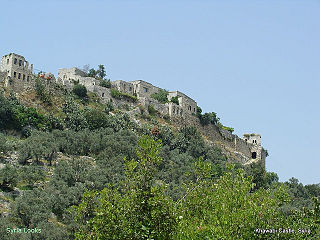
Khawabi, also spelled Qala'at al-Khawabi is a village and medieval citadel in northwestern Syria, administratively part of the Tartus Governorate, located 20 kilometers northeast of Tartus and 12 kilometers east of al-Sawda. Khawabi is situated in a hilly area, surrounded by olive groves, in the Coastal Mountain Range. Nearby localities include al-Sawda and to the west, Al-Annazah to the northwest, al-Qamsiyah to the north, Brummanet Raad to the northeast, al-Shaykh Badr to the east, Khirbet al-Faras to the south and Bimalkah to the southwest.

The Hananu Revolt was an insurgency against French military forces in northern Syria, mainly concentrated in the western countryside of Aleppo, in 1920–1921. Support for the revolt was driven by opposition to the establishment of the French Mandate of Syria. Commonly named after its leading commander, Ibrahim Hananu, the revolt mainly consisted of four allied insurgencies in the areas of Jabal Harim, Jabal Qusayr, Jabal Zawiya and Jabal Sahyun. The rebels were led by rural leaders and mostly engaged in guerrilla attacks against French forces or the sabotage of key infrastructure.
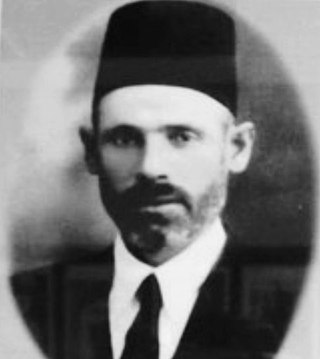
Umar al-Bitar (1886–1946) was a Syrian rebel leader who led a revolt against French military forces in his native Latakia region in 1920. After the suppression of his revolt, he evaded arrest by the French authorities by escaping to Turkey. He was pardoned and returned to Syria in 1936 and entered politics as part of the anti-French opposition. The French authorities again tried to arrest Bitar in 1945, but he managed to escape to Turkey, where he died the next year.
Abū Muḥammad al-Ḥasan ibn Yūsuf al-Makzūn al-Sinjārī, better known simply as al-Makzun al-Sinjari, was a paramount military, religious and literary figure in Alawite history and tradition. Al-Makzun was well-educated in Arabic poetry and Shia Islam. Descended from a line of emirs of Sinjar, he succeeded his father as emir of the town in 1205. Many Alawites from Sinjar migrated to the mountains around Latakia during the time of his father. The Alawites of these mountains later appealed for al-Makzun's intervention amid their struggles with the Kurds and Nizari Ismailis. Al-Makzun led an expedition to relieve the Alawites after many were massacred in the Sahyun fortress. Between 1218 and 1222, he and his sons captured the forts of Abu Qubays, which became al-Makzun's seat of power, al-Marqab, al-Ulayqa and Baarin. He ultimately drove out most of the Kurds and Ismailis from the mountains, consolidating the Alawite presence. In the following years, he penned a number of Alawite religious books.
The Alawite revolt, also known as the Nusayri rebellion, was one of the arenas of the Syrian Peasant Revolt (1834–1835). Between 1834 and 1835, the Alawites (Nusayris) rose up against Egyptian rule of the region, while pro-Egyptian governor of Homs Salim Beg and the forces of Emir Bashir Shihab II of the Mount Lebanon Emirate, commanded by Khalil and his relatives, participated in the suppression of revolts in Akkar, Safita, the Krak des Chevaliers and an Alawite revolt in the mountainous region of Latakia.

